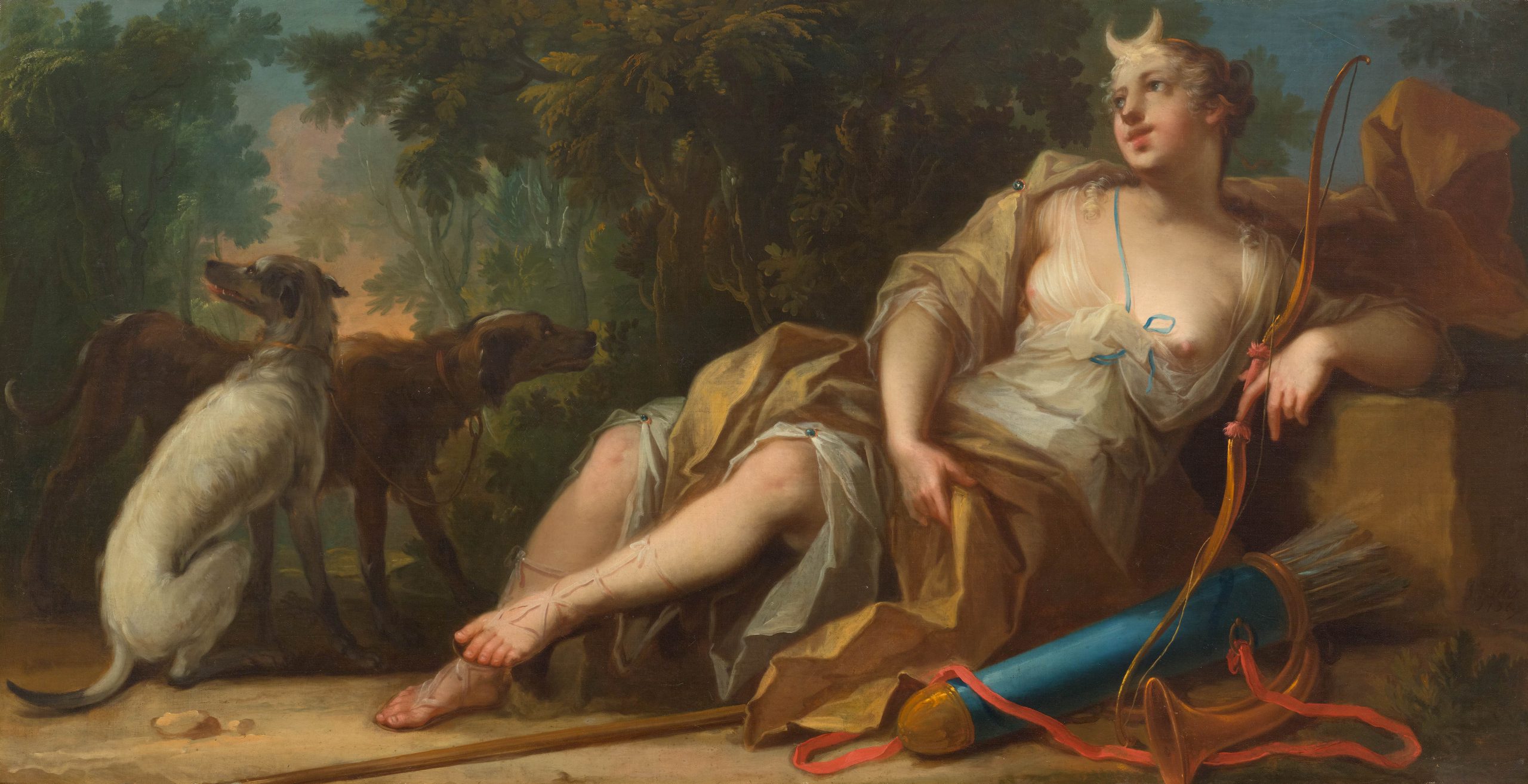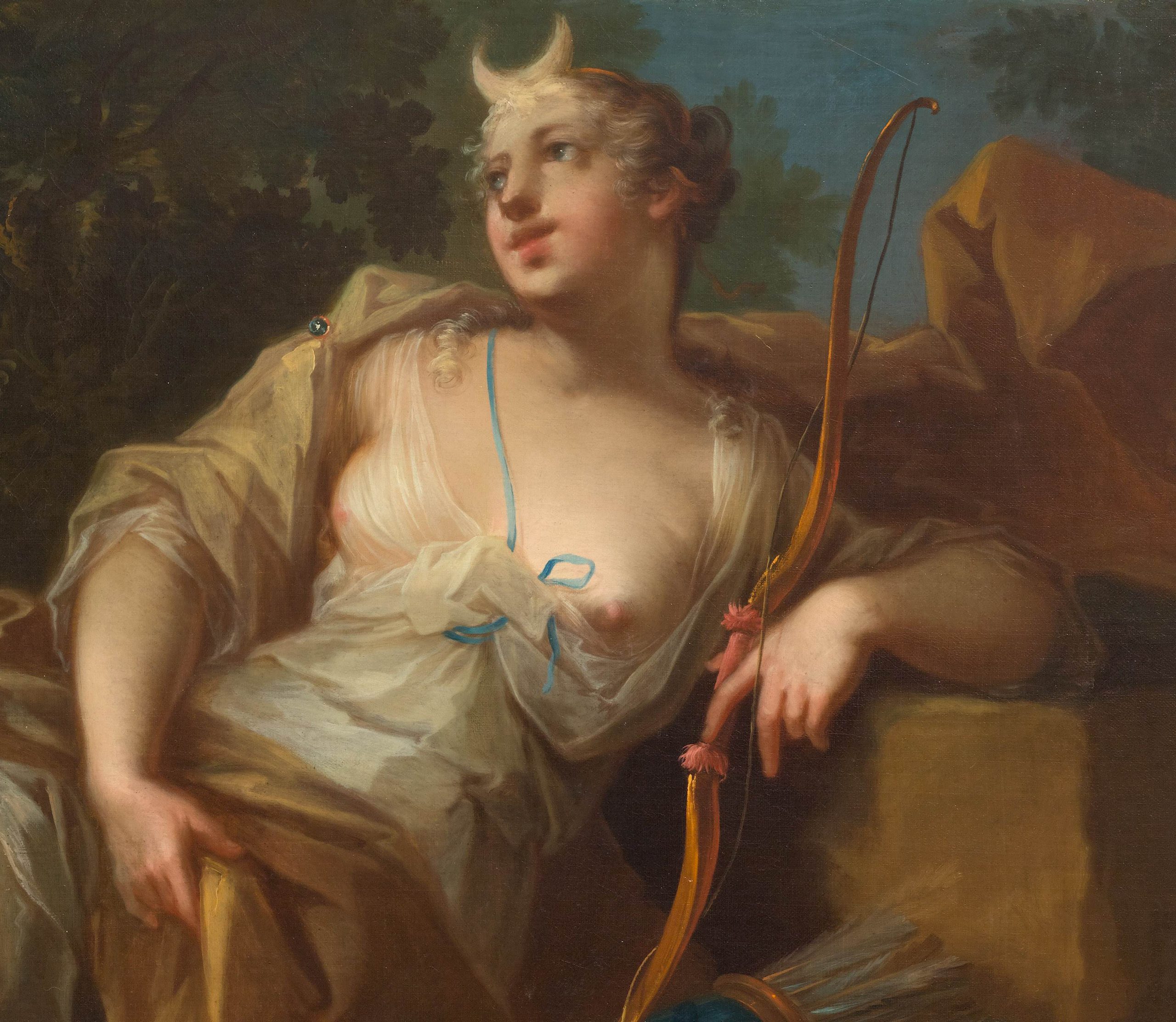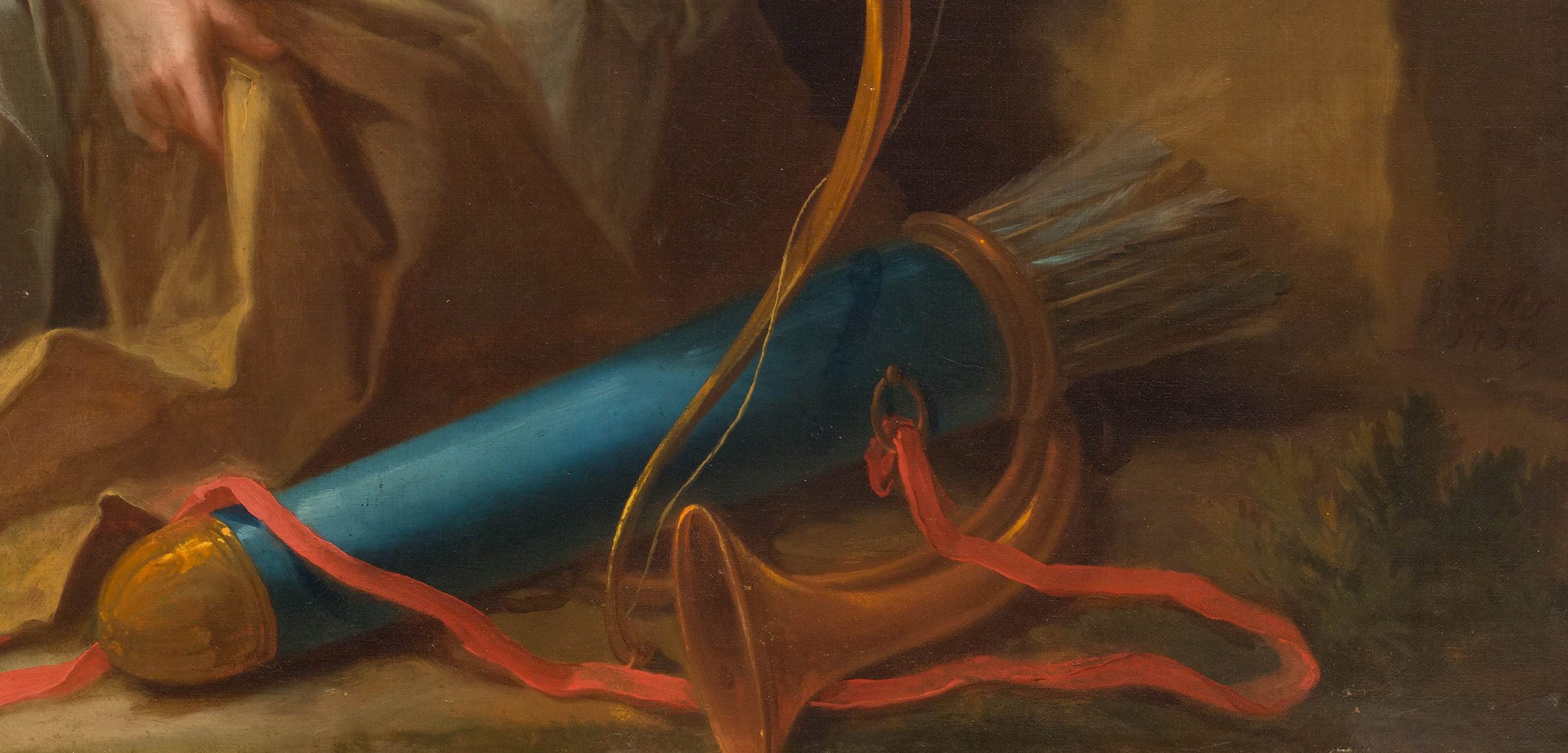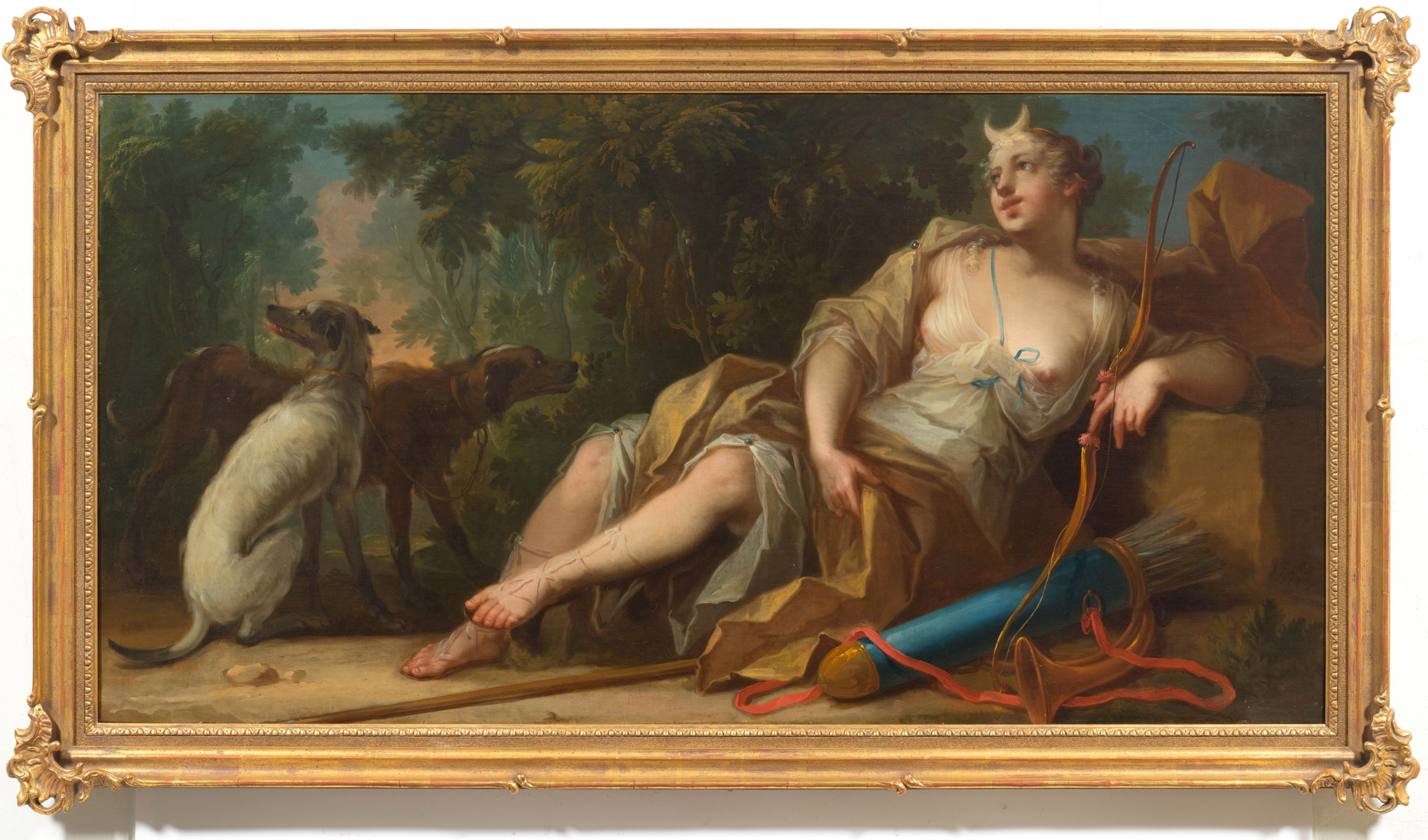JOHANN HEINRICH KELLER (Zürich 1692 – 1765 The Hague)
Johann Heinrich Keller (Zürich 1692 – 1765 The Hague)
Diana Before the Hunt
Oil on canvas, 74 x 142.5 cm (29.3 x 56.1 inch); presented in a giltwood frame of 18th-century model
Signed and dated ‘J. Keller 1736’ (lower right)
Provenance
~ Anonymous sale, Galerie Koller, Zürich, 18-20 September 1996, lot 80, repr.
~ Anonymous sale, Christie’s, London, 24 April 2009, lot 50, repr.
~ Private collection, Switzerland
***
Johann Heinrich was born as the son of the sculptor Johann Jakob Keller in Zürich in 1692.1 According to Keller’s early biographer Johan van Gool, writing in his Nieuwe Schouburg der Nederlantsche Kunstschilders en Schilderessen, published in 1750-1751, many details about the early years of the artist are known.2 Keller was initially trained in the art of drawing by his father, upon which his education was complemented by a period of travelling, during which he studied in the studio of Luca Antonio Colombo in Stuttgart, Josef Adam von Mölk in Kempten and Nikolaus Gottfried Stuber in Munich. By 1722 he was in Innsbruck, where he assisted Cosmas Damian Asam in painting frescos; the following year he reached Paris, where he stayed for a year or so and studied drawing at the Académie Royale. Keller then moved to The Hague, where he settled in 1726 and remained for the rest of his life. Among his pupils were Dirk van der Aa and Cornelis Kuipers.
Keller was highly successful in The Hague, and received commissions from patrons from the highest circles, including the Prince of Orange and his courtiers. Keller produced ensembles for decorative paintings in many of the grandest houses, some surviving in situ. A series of four overdoors and a chimney piece, all dated 1731, is preserved in a room on the ground floor of Prinsegracht 6, The Hague (formerly the Museum Bredius). An extensive series of six ‘behangsels’, a ceiling piece and overdoors, painted for Huis Huguetan on Lange Voorhout 34 around 1735, was removed in 1819 when the Royal Library moved into the house. In 1753 Keller produced a series of ten overdoor paintings with mythological subjects including Mars and Venus, Juno and Argus and Mercury and Argus for Stadtholder Willem IV, Prince of Orange, installed at the the Stadhouderlijk Kwartier, from which they are removed in 1808, and some of which are still part of the collections of the Orange-Nassau family (fig.).3 The estate of Keller was sold by auctioneers Franken and Brouwer in The Hague on 24 May 1766, which included part of his studio holdings, including, for instance, an overdoor painting of Dawn Expulsing Night, dated 1734.4
As has been observed by Charles Dumas, to whom we are grateful, this painting originally served as an overdoor or supraporte, placed over a wide door, or a pair of doors.5 Dated 1736, it is among the earliest Dutch pieces known by Keller. Dumas also noted that Keller frequently chose Diana, goddess of the hunt, as a subject, and that our painting is the earliest of these. As the goddess still has all her arrows, and her companion dogs are clean and rested, the scene probably represents Diana before embarking on the hunt. Other representations of the goddess show her returning from the hunt, bathing, Diana and Endymion, Diana surprised by Actaeon, and the worship of the sculpted image of the goddess. Although the original position of the present painting is no longer known, it is likely to have been a grand house in The Hague, where Keller executed many commissions. There would have been companion pieces over other doors and the chimney, and possibly a large ceiling piece.
This painting will be included in the forthcoming catalogue raisonné of works by Keller, which is being prepared by Drs Charles Dumas.
1. For the artist, see Charles Dumas, ‘Johann Heinrich Keller (1692-1765)’, Delineavit et Sculpsit, no. 29 (December 2005), pp. 54-55
2. Johan van Gool, Nieuwe Schouburg der Nederlantsche Kunstschilders en Schilderessen, The Hague 1750-51, vol. II, pp. 266-273.
3. Illustrated here is Juno placing the eyes of Argus in a peacock’s feathers; each circa 50 x 144 cm, Stichting Historische Verzamelingen van het Huis Oranje-Nassau, inv. nos SC/1326, 1327, 1328, 1329, 1330; T. Rosa de Carvalho-Roos, ‘Hoe houdt de stadhouder Hof?, Een speurtocht naar het decor waartegen het dagelijks leven van de stadhouders Willem IV en Willem V zich afspeelde in de Stadhouderlijke Kwartieren van het Haagse Binnenhof’, Oud Holland, 116 (2003), pp. 134-135.
4. Oil on canvas, 67 x 86 cm (originally larger); Drouot Richelieu, Paris, 20 December 1993, lot 79; I am grateful to Drs Charles Dumas for this reference.
5. Email correspondence, 18 October 2022.





